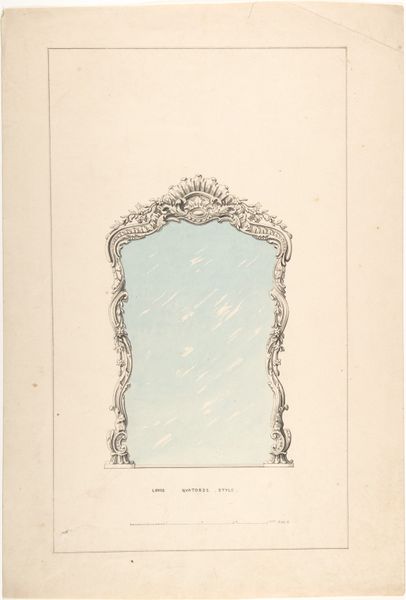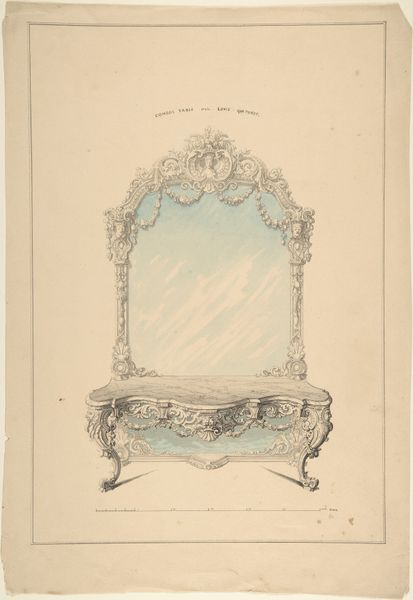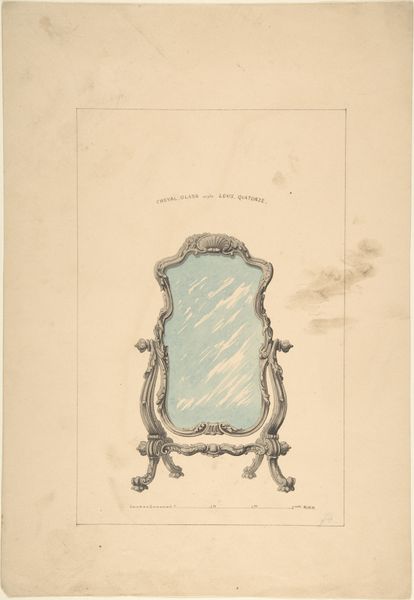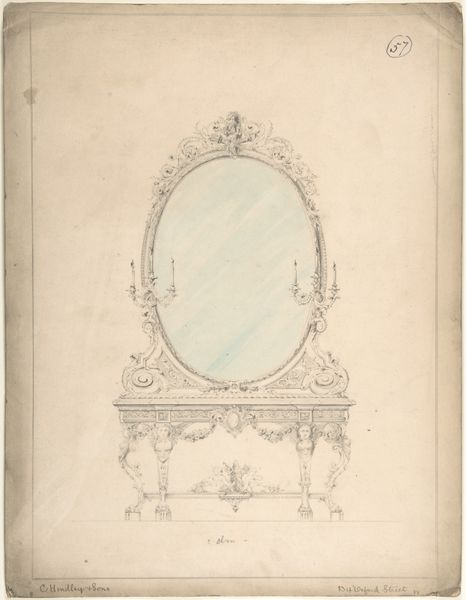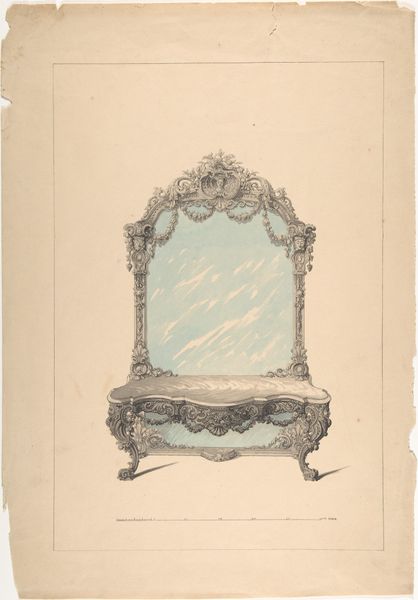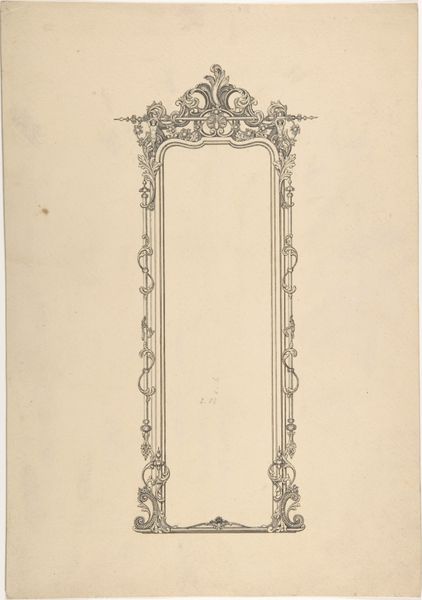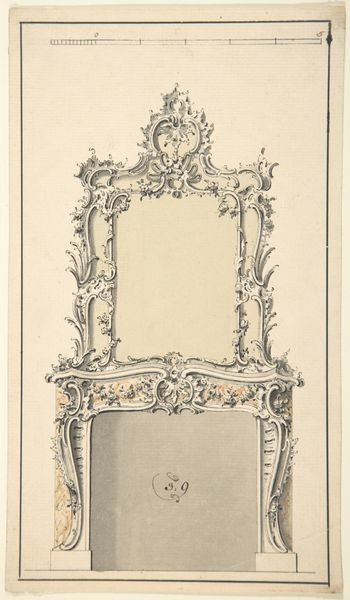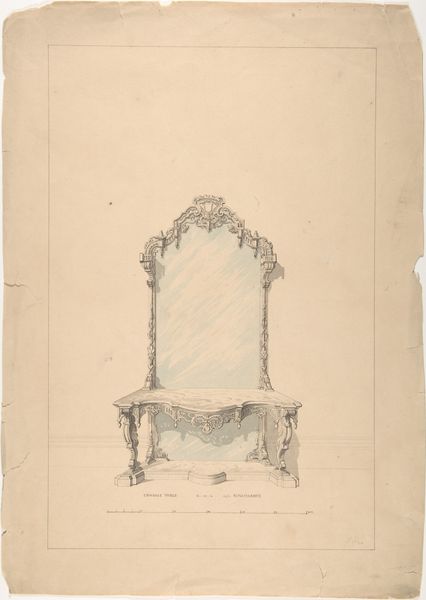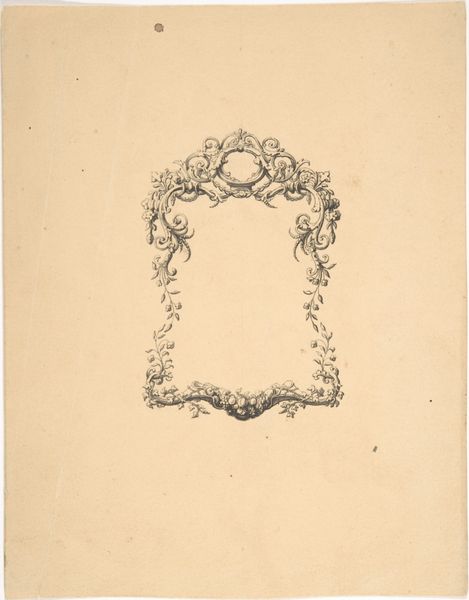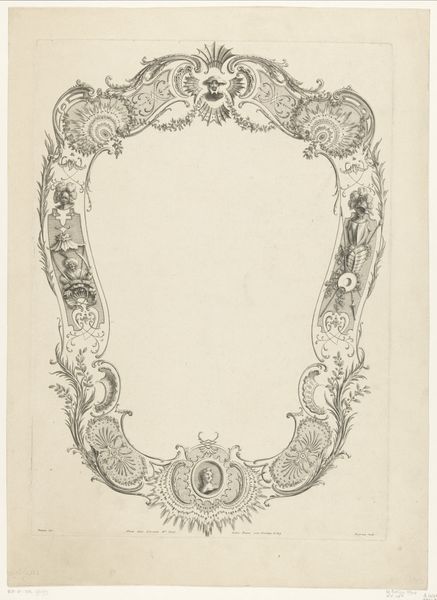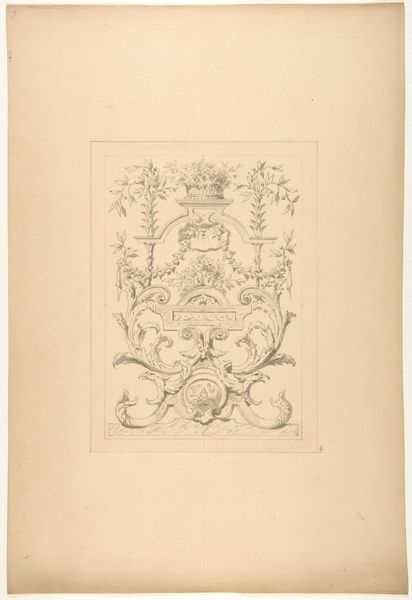
Copyright: Public Domain
Curator: This print is called "Pier Glass," and it's attributed to Robert William Hume, dating sometime between 1850 and 1904. Editor: It has such an airy feel about it. That very light blue wash within the mirror's frame gives the impression of faded grandeur. Is this meant to be a study for an actual pier glass? Curator: Quite possibly. The artwork showcases a style described as Louis Quatorze, evoking that distinct visual language and summoning memories of courtly display and power structures that underpinned the Sun King's image. Editor: Yes, I can see the Baroque influence in the flamboyant ornamentation and sculptural detailing, a real celebration of craft, even on paper. The engraved lines are so fine and precise. You can almost feel the weight of the mirror, although here we only get a trace of its manufacture through the medium of ink. Curator: Precisely! This object implies opulence; more than mere surface reflection is taking place here, inviting its users, or in this case, its viewers to embody this persona through its aesthetic. In other words, you aren't simply looking at your external self, but are made to look richer by the image you find looking back at you, or through the gaze you offer those around you. It is quite self-reinforcing. Editor: It certainly speaks of carefully constructed identity. I'm wondering, looking at the period in which it was made – during the rise of industrialization, how does a crafted image of such intricate work provide value to those engaging with mass-produced objects, given that it mimics those ornate furnishings made for elites but that might now become commonplace? Curator: Ah, that’s where cultural memory comes into play. The image refers back to what it meant to hold status in prior ages, an imagined or performed past, at a time when even newer methods of production made these furnishings much more widespread and accessible. It's nostalgia elevated. It preserves cultural aspiration, a continuous visual echo. Editor: I see. It’s quite striking to think about it less as a mirror and more as a screen onto which pasts and desires are projected, all made possible through production! Thanks for expanding how I engage with this drawing, seeing beyond surface to social history! Curator: The pleasure has been all mine. These decorative echoes are surprisingly resonant.
Comments
No comments
Be the first to comment and join the conversation on the ultimate creative platform.

